TRISKELION POTTERY
I would like to say a few words about Triskelion Pottery, which was such a huge part of my life.
My husband, Ara Nigogossian, and I worked together for many years producing high quality replicas of ancient Cypriot pottery. When I am old I would like to find a home for my collection of around 80 pieces. Very soon I will be 73 years old. ( In Feb 2025) It may be some while before I am old, but who knows! I envisage a large glass cabinet, which I will pay for, in a corridor of an anthropology department or in the entrance hall of a university archaeology department. If you have any suggestions or know who I might get in touch with please send me an email at hocking.reid@gmail.com Thank you.
Do feel free to skip the following potted history of our time in Cyprus and go straight to the images below.
Triskelion Pottery occupied 20 very interesting years of my life. I was rewarded with a love for the countryside of Cyprus, with being part of the people of the tiny village where we lived and worked, and with the very dear friends we made there. Studying the pottery of Cyprus was an enormous privilege and a gift of a lifetime. It gave me a view into the island’s archaeology and history as far back as 7000 years. The position of the island, within sight of the levant, (on a clear day from the top of the Troodos mountains), insured that it had deep connections to every civilization of the ancient Eastern Mediterranean. These connections are evident in the artistic and technological development of the wonderful pottery of Cyprus.
In 1985, in London, Ara and I decided to make replicas of ancient Cypriot pottery. He had not a jot of experience making anything approaching art and had never even handled clay let alone made a pot on a wheel. He had a huge challenge in front of him. In fact we both did. We intended to come as close as possible to the originals. I had to learn everything I could about the techniques and materials used in decorating and hand building from the early bronze age up to the iron age. Fortunately I had a friend who sponsored us for a readership at the British Museum. Over a period of two years we worked in the basement of that wonderful museum weighing, measuring and photographing the most striking of the many hundreds of ancient Cypriot pots in their collection. We set up a tiny pottery studio in our North London home and set to work. After three years we upped sticks and moved to Neo Chorio, our tiny village in the very north west tip of Cyprus in the district of Paphos. The village still had one foot in the distant past. No tractor had yet set a wheel in the fields, only oxen and donkeys were used to pull wooden ploughs. Most of the villagers had a few sheep or goats, and a small patch of land with a few carob and olive trees. It was a total of life change for me.
We put out our shingle and commenced trading in September 1988. We had chickens and rabbits and a big vegetable patch at the back of our pottery, a huge fig tree, lemon and pomegranate trees and a wonderful sprawling grape vine. Tourist and collectors were attracted to our work and happily, so were an English and an American archaeologist husband and wife, Laina and Stuart Swiny. They were and still are highly respected in their field. I say happily because they introduced us to the archaeological community, encouraged us and documented our experiments in ancient firing techniques. Stuart supported my particular interest in the firing temperatures, pigments and methods of painting the antient pottery. Stuart loaned me a large study collection of pottery sherds from the Early Bronze age, around 2300 BC, up to around 650 BC in the Iron Age. I was invited to give talks and gave a few seminars on ancient pottery technology at universities in the United States. Stuart and Laina remain our good friends.
We were very, very fortunate to become so deeply involved with the elegant and beautiful pottery of ancient Cyprus, and to have been so welcomed by the people of the village of Neo Chorio. We were privileged to be part of and be witnesses to the old culture of Cyprus before the digital age.
Sunset from my most treasured place in the world, just outside the village of Neo Chorio. Where, in 2020, my daughter, Tamar Nigogossian, and I, and our many dear friends, scattered Ara’s ashes.
A copy of an Early Bronze Age, red polished ware jug
One of my most favourite and satisfying pots to make.

The sign out front of our pottery in Neo Chorio

The other sign outside our pottery

Ara built a small top loading kiln so that he could control the firing atmosphere. He used donkey dung to produce the black smoked pottery.

A much younger me
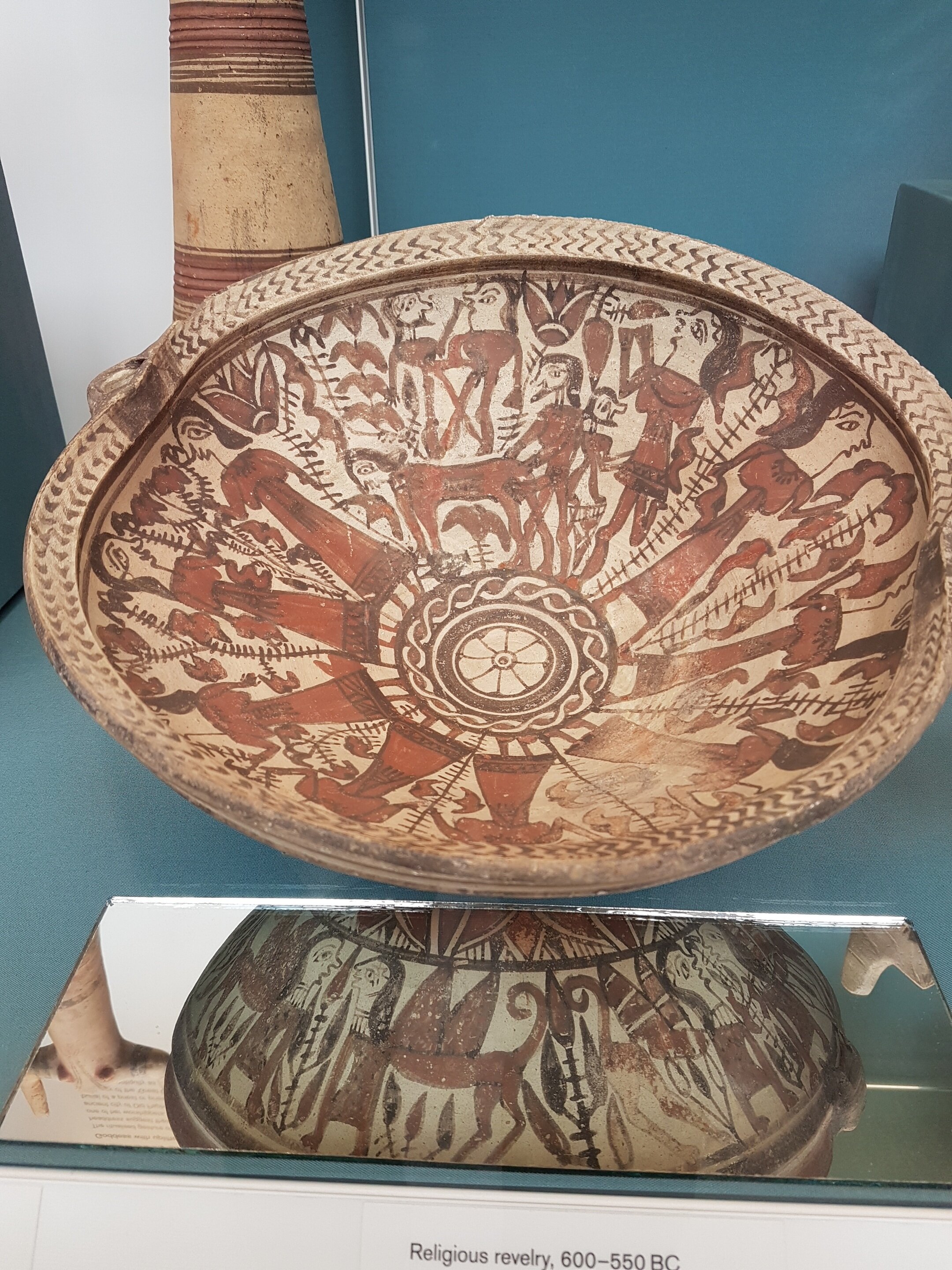
The Achna Bowl in the British Museum
This beautiful Iron Age bowl is from around 650 BC . This is the real one. Take a close look and you will see some rather naughty goings on! In the next 3 slides you can see our copy of it.

Our Achna bowl
This bowl was a labour of love for us. In the many years of our production we made only 7 copies. It took me 7 full days to sketch out the figures on the unfired pot, then a further 4-5 days to paint it with the brown and red slips. Along with Ara’s wheel work and firing the bowl took more than 2 weeks to make.

Our Achna bowl, the underside
Alongside the Cypriot figures there were several influences in the design of the imagery including Egyptian lotus flowers and Assyrian sphinxes.

Our Achna bowl

Copy of a red polished ware jug from the Early Bronze Age circa 2500

A female figurine from the Middle Bronze Age

A ceramic copy of a large stone cruciform female figurine from the Chalcolithic period The original is from circa 3000-2500 B.C.

This wonderful bowl was in the collection of Desmond Morris who was kind enough to invite us to see his collection and gave us permission to copy many of the pieces.

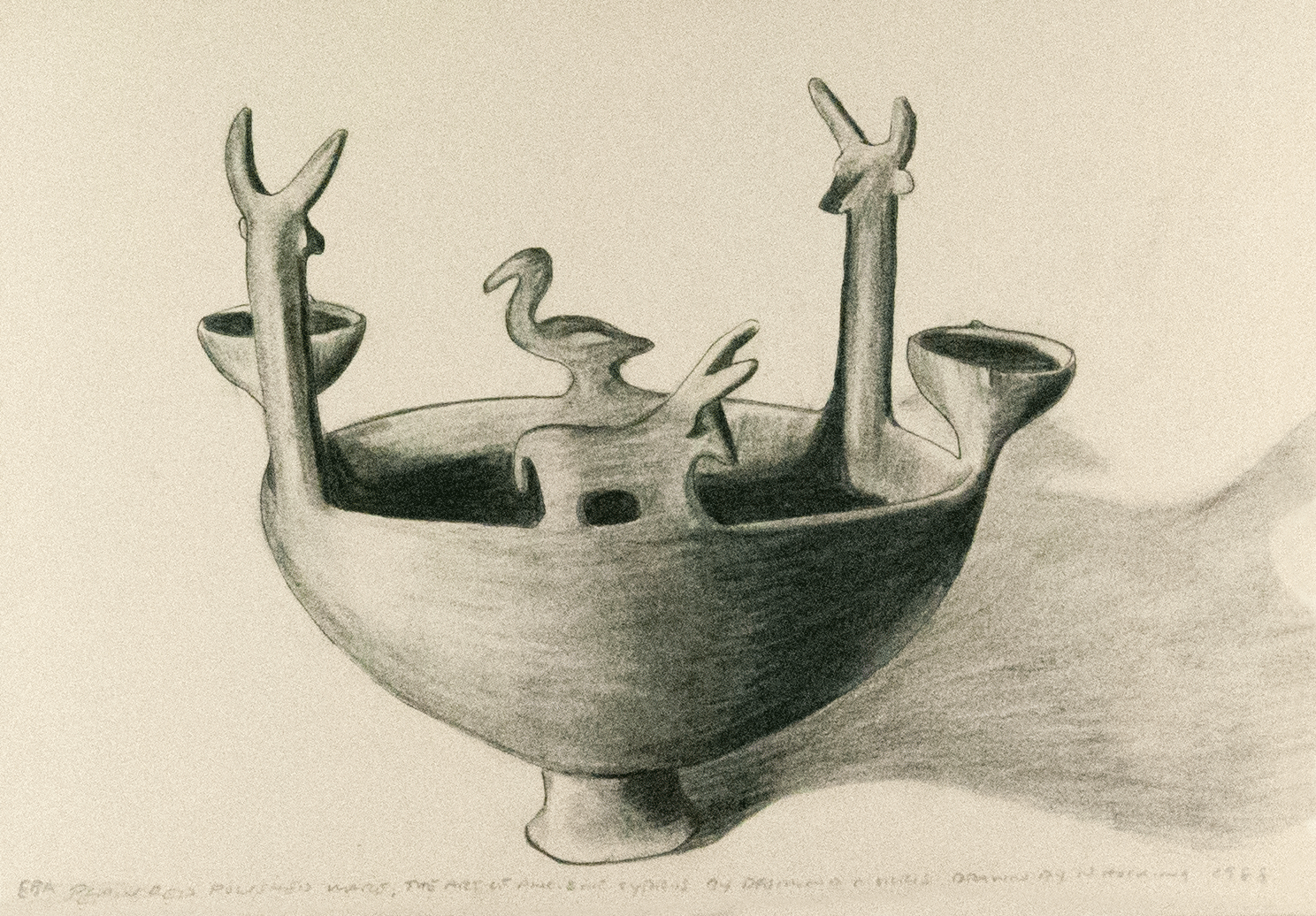
One of the postcards we had for sale at our pottery.



Ara preparing a batch of local clay.

Some of the results of our bronze age firing experiments.

Still in the ashes of the fire, more experimental bronze age firing.
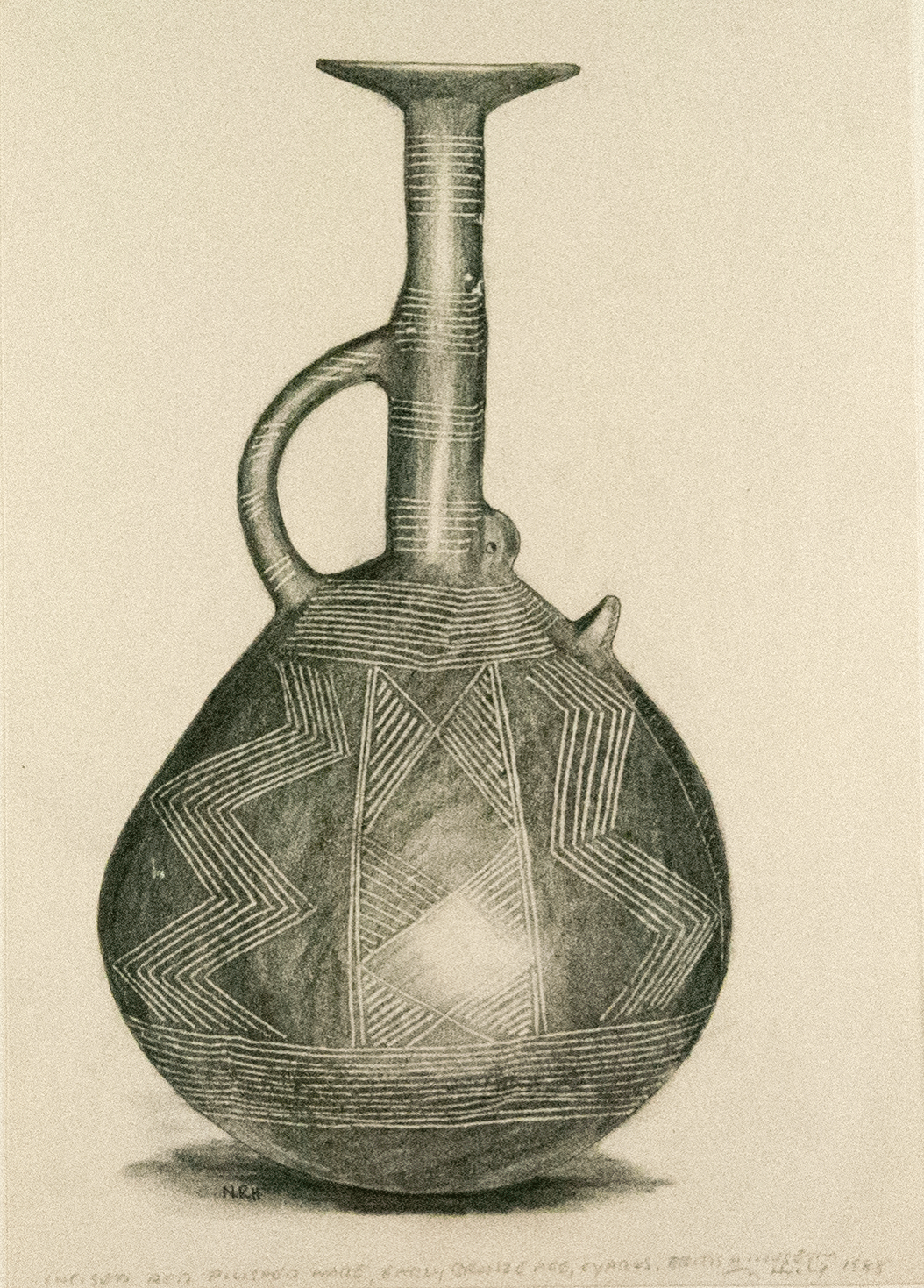
One of our postcards

Two copies of bronze age incised ware >







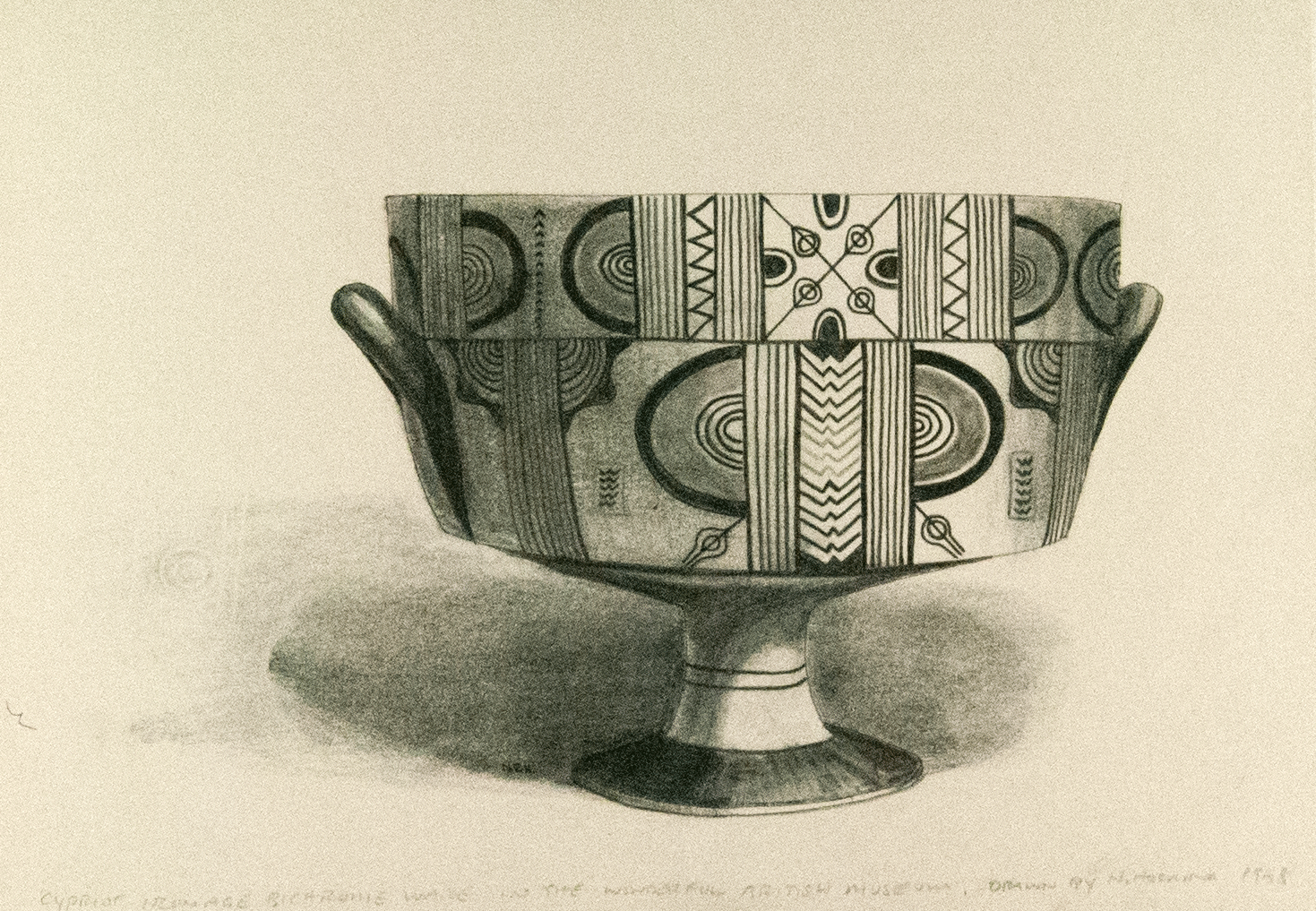
One of our postcards







A view of our friendly and somewhat chaotic display at Triskelion Pottery

Another view of the display at Triskelion Pottery in the village of Neo Chorio in the Paphos district of Cyprus




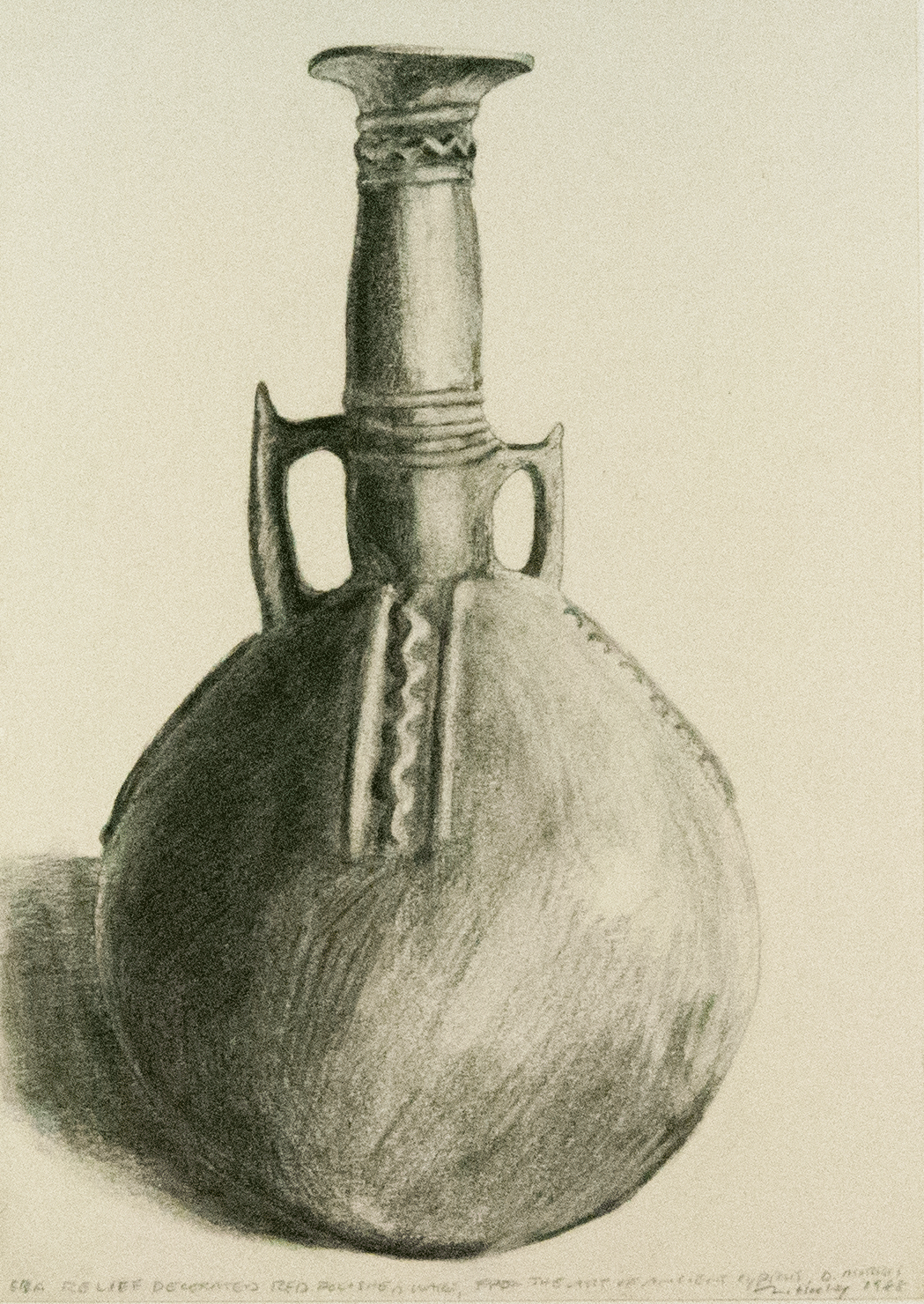
Another of our postcards













Early Bronze Age pieces with one Chalcolithic piece in the centre

Early Bronze Age replicas

Iron Age Black-on-Red ware replicas

Iron Age pieces with one Late Bronze Age piece

Iron Age pieces with on that was buried in the chicken coup to weather it a bit.

